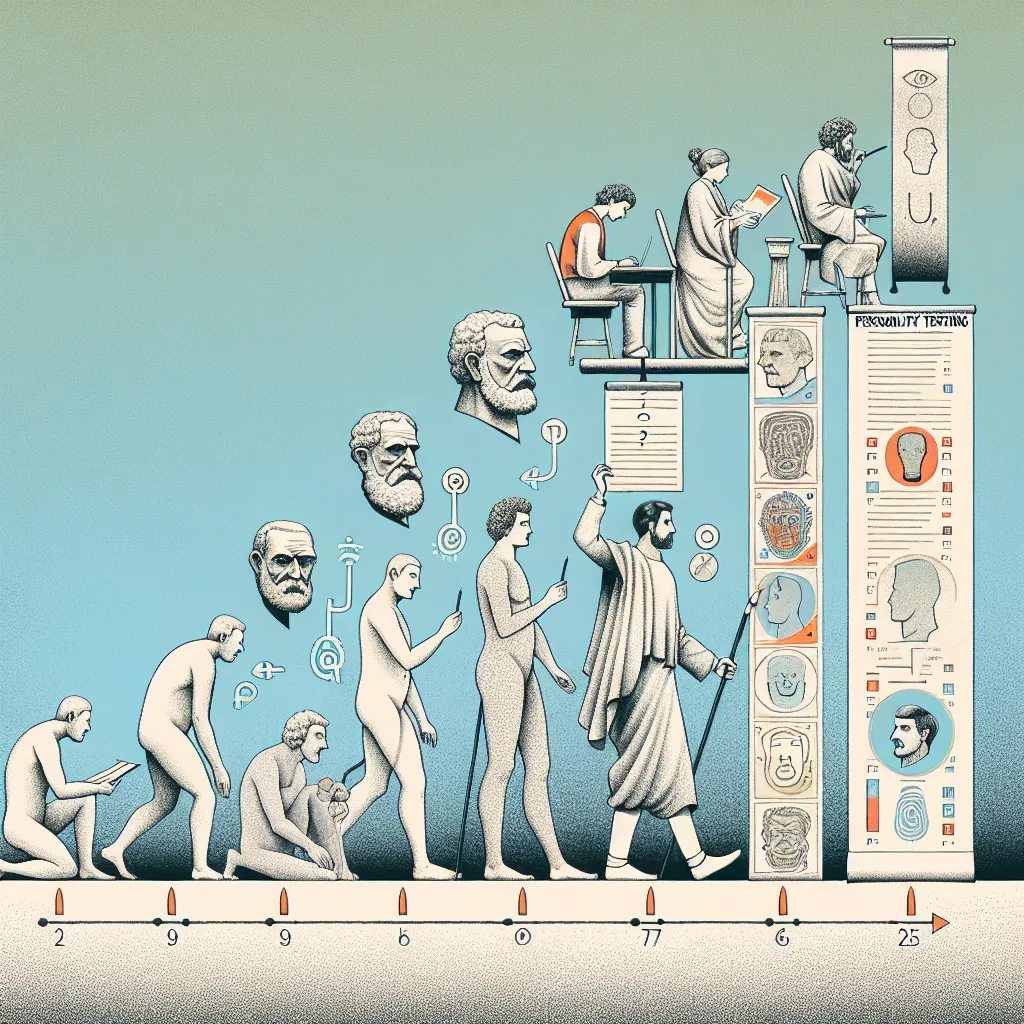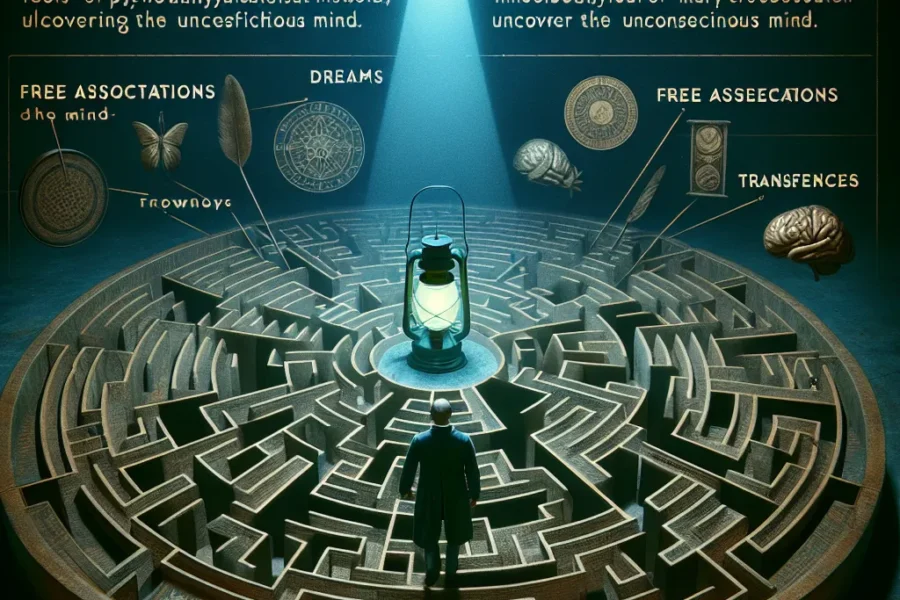Personality testing has become an integral part of the modern landscape, widely used in various sectors from employment to education and psychological assessment. Tracing the roots and growth of personality testing involves examining a rich tapestry of psychological theories and the development of scientific measurements that have allowed individuals to gain insight into their personal characteristics, strengths, and areas for growth.
The history of personality testing is deeply entwined with the study of human individuality and the quest to understand how personality traits differentiate one person from another. The earliest forms of personality assessment can be found in the philosophical musings of ancient civilizations. For instance, Hippocrates, a Greek physician in 460 BC, proposed that personality traits were related to bodily fluids or “humors.” Though his biological humoral theory has been widely debunked, it was a starting point for associating physical elements with personality characteristics.
The journey from abstract theory to practical assessment took a significant leap with Sir Francis Galton in the 19th century, often considered the father of psychometrics. Galton’s fascination with individual differences and heredity laid the foundation for the more systemic study of personality. His work spurred a flurry of interest in the measurement of human faculties, such as intelligence, and by extension, personality.
However, it wasn’t until the early 20th century that personality testing, as we understand it today, really began to take form. The outbreak of World War I presented military psychologists with the challenge of screening and classifying soldiers. This led to the development of the Army Alpha and Beta tests, primarily focused on intelligence but also considered as precursors to standardized personality assessments.
In the realm of personality theory, the name Sigmund Freud is synonymous with early explorative work in human psychology. Freud’s psychoanalytic theory, though focusing more on intrapsychic conflicts and less on outward traits, set the stage for understanding and categorizing aspects of personality. His contemporary, Carl Jung, likewise influenced the trajectory of personality testing by introducing psychological typology — the idea that people can be categorized into personality types. Indeed, Jung’s ideas later influenced Katharine Cook Briggs and her daughter, Isabel Briggs Myers, in the creation of the Myers-Briggs Type Indicator (MBTI), one of the most popular personality assessments used today.
The growth of personality testing accelerated through the 20th century with advancements in psychometric theory and statistical methods. The Rorschach inkblot test, developed by Hermann Rorschach, and the Thematic Apperception Test (TAT) by Henry Murray, represented projective tests’ contributions to the field. These tests were based on the premise that when individuals are presented with ambiguous stimuli, their responses reveal hidden aspects of their personality.
Modern personality testing owes much to the empirically driven work of Raymond Cattell, who used factor analysis to identify underlying personality traits. His Sixteen Personality Factor Questionnaire (16PF), developed in the mid-1900s, was grounded on the premise that one could scientifically measure personality dimensions. Another watershed moment for personality testing came with Paul Costa and Robert McCrae’s introduction of the Five-Factor Model, encapsulated within the widely adopted Neo Personality Inventory, which articulates personality along five broad dimensions now commonly known as the “Big Five”: openness, conscientiousness, extraversion, agreeableness, and neuroticism.
In recent years, the proliferation of online platforms and software has made personality testing more accessible than ever before. This accessibility has brought about a surge in the use of personality assessments in various contexts, especially in the workplace for hiring, team-building, and professional development initiatives. Companies, educational institutions, and even dating services use personality tests to ascertain compatibility, team cohesion, and individual proclivities.
The growth in popularity of personality tests has not been without its critics. Issues such as cultural bias, the validity and reliability of the tests themselves, and the ethical implications of test results being used to make high-stakes decisions have been topics of significant debate within the field of psychological assessment.
Nonetheless, the allure of self-discovery and the utility of categorizing personality traits for various practical applications keep the use and development of personality testing alive and well. The industry continues to evolve with the integration of AI, machine learning, and complex algorithms offering increasingly sophisticated tools to analyze and interpret personality data. From data-driven hiring platforms to custom-tailored educational programs, the applications of personality testing are becoming more personalized and embedded in everyday technology.
To this day, researchers and psychologists are working to refine existing models of personality and to devise new ones that can more accurately capture the nuances of human individuality. They strive to tackle the challenges of cross-cultural applicability and to enhance the tests’ predictive capabilities.
The roots of personality testing are deep and complex, entwined with philosophical theories, medical hypotheses, and a growing understanding of human psychology. From the early theoretical frameworks to today’s hi-tech assessments, personality testing has shown considerable growth and has cemented its place as a valuable tool for personal development, coaching, and a multitude of other areas.
As we continue to explore the intricacies of the human psyche, personality testing stands as a testament to our enduring curiosity about what makes us unique. The field has transformed from a speculative practice into a rigorous scientific discipline, and as it continues to mature, it remains an essential component in our quest to decipher the human personality.



Leave a Comment